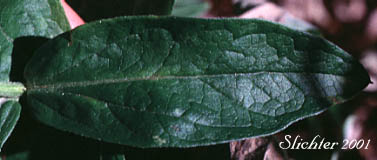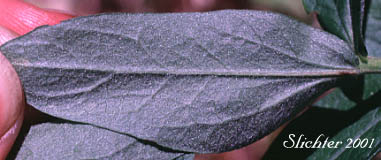[Asters: The Genera Canadanthus, Eucephalus, Eurybia, Oreostemma, and Symphyotrichum in Mt. Adams Country]
Cascade Aster
Eucephalus ledophyllus
Synonyms: Aster ledophyllus, Aster ledophyllus var. covillei, Aster ledophyllus var. ledophyllus, Eucephalus ledophyllus vr. covillei, Eucephalus ledophyllus var. ledophyllus
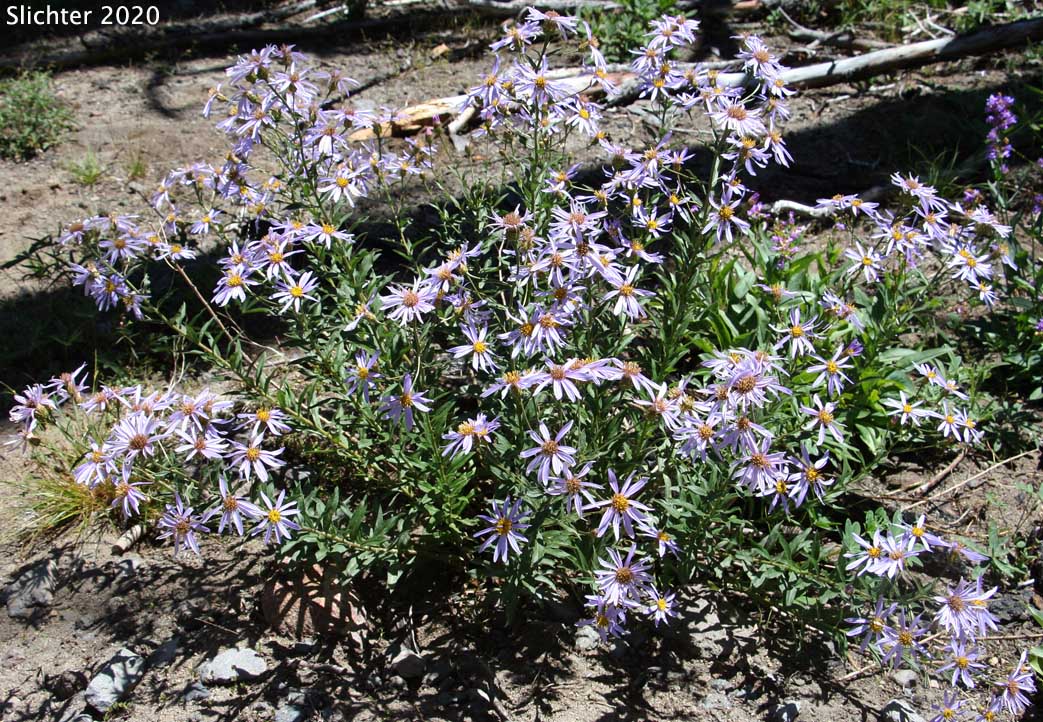 -
- 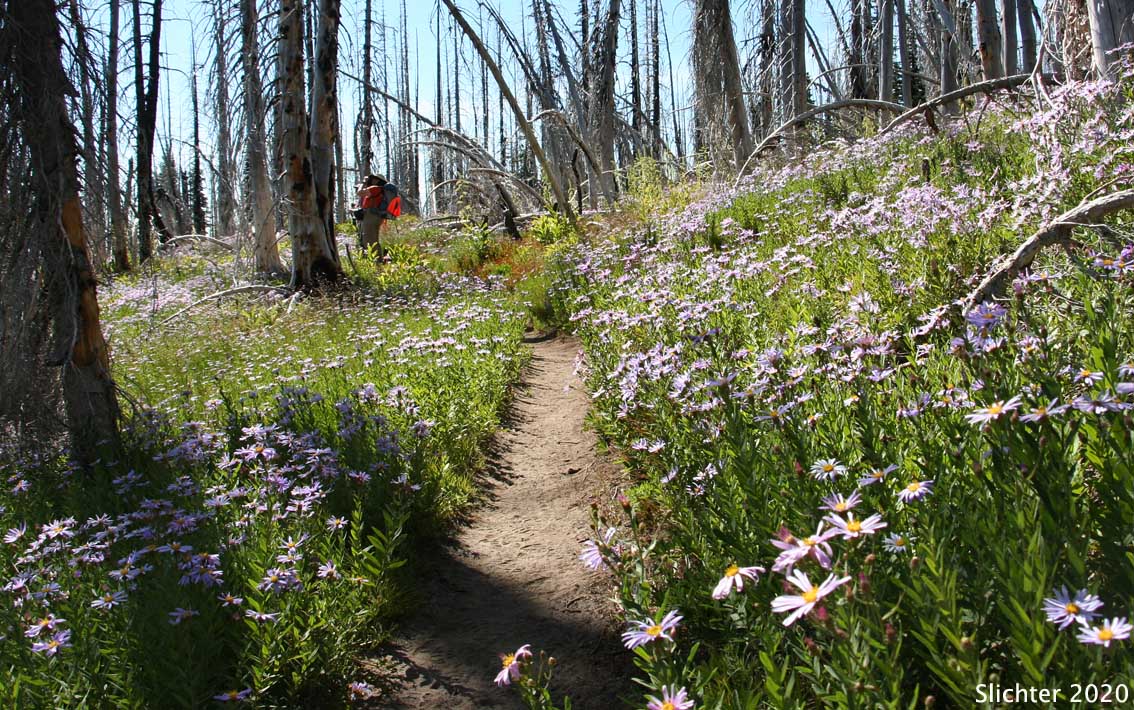
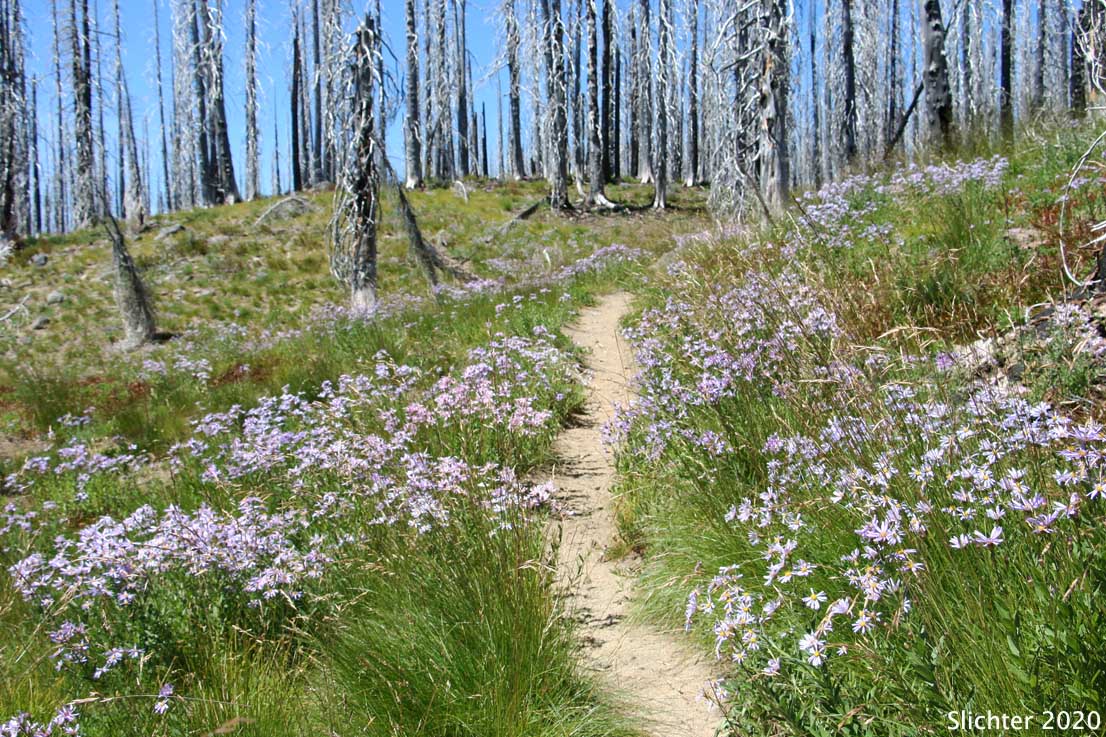 -
- 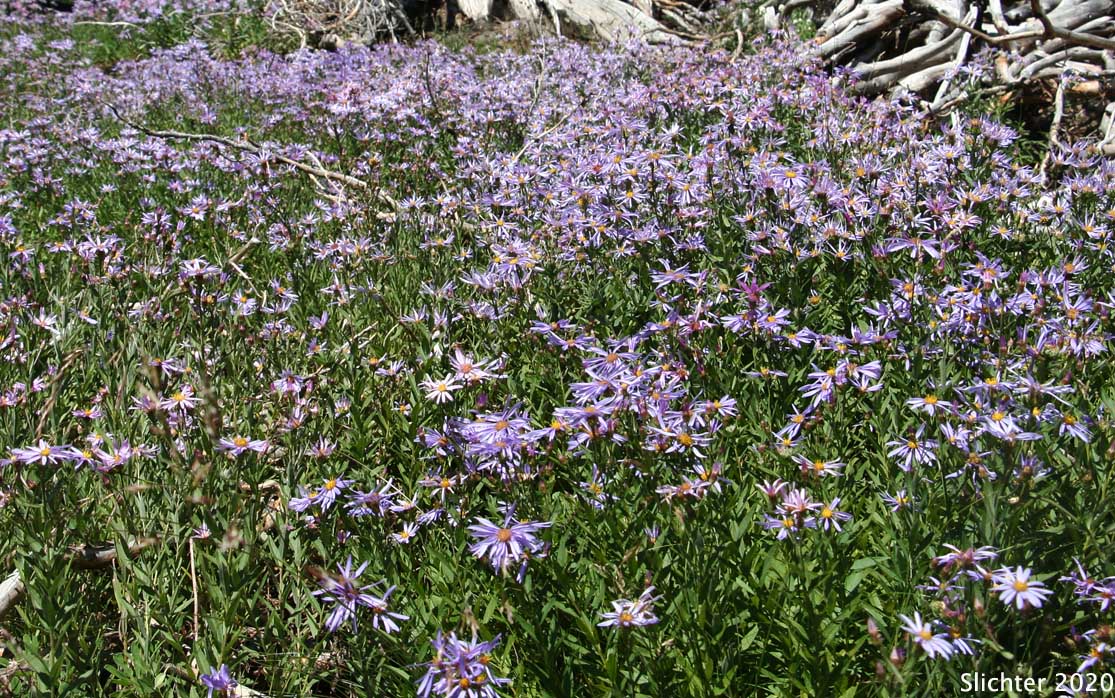
Cascade aster as seen in bloom along the Pacific Crest Trail #2000 between the junction with the Stagman Ridge Trail #12 and Horseshoe Meadows, Mt. Adams Wilderness..........August 7, 2020.
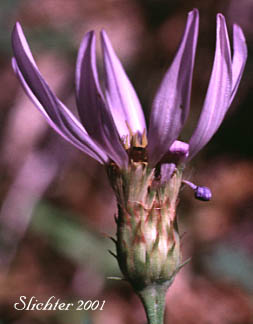 The photo at
right shows the involucre of cascade aster as seen on steep south-facing
slopes to the west of Little Mt. Adams on the southeastern side of Mt. Adams.........September
8, 2001.
The photo at
right shows the involucre of cascade aster as seen on steep south-facing
slopes to the west of Little Mt. Adams on the southeastern side of Mt. Adams.........September
8, 2001.
Characteristics:
Cascade aster is a pretty perennial wildflower with erect stems
from 30-60 cm high. The upper stems are noticeably leafy while those of the
lower stems are much reduced and scalelike. The upper leaves are largely uniform
in size and shape and may be lanceolate or broadly elliptical in shape. The
margins are generally entire with the bases sessile. The leaves vary from 3-7
cm long and 5-20 mm wide with a glabrous or slightly hairy upper surface and
the lower surface covered with a fair accumulation of dense gray and cotton-like
hairs.
The inflorescence consists of one to several (usual) flower
heads which measure from 2.5-4 cm wide. If several to many flowers are present,
the inflorescence is a corymb or raceme. The 6-20 pink to purplish rays surround
a small, yellowish central disk. The rays vary in length from 12-20 mm long.
The involucre is 7-11 mm high with 4-5 rows of narrow and sharp-pointed bracts.
The midvein of each bract is evident or may be slightly keeled and each bracts
is greenish above or may have purplish edges. The bracts may be finely glandular.
The relatively low number of wide rays, the
lack of large leaves on the lower stems, and the fat, ovate leaves with gray-haired
ventral surfaces are keys to identifying this species.
Habitat:
Cascade aster is a wildflower of open forests and meadows below
timberline. It is more common in drier conditions than some other meadow asters
which need more moisture.
Range:
Aster ledophyllus is found in the
Cascade Mts. from northern Washington to southern Oregon.
Dorsal leaf surface of cascade aster, Mt. Adams.......September
8, 2001.
Ventral leaf surface of cascade aster, Mt.
Adams........September 8, 2001. Note the white-woolly hairs covering the
lower surface.
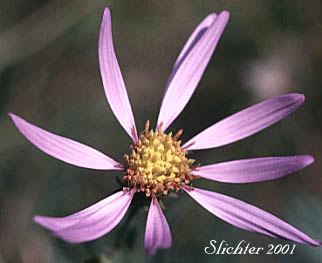 Cascade aster from the Shorthorn Trail, Mt. Adams Wilderness..........August
20, 1998.
Cascade aster from the Shorthorn Trail, Mt. Adams Wilderness..........August
20, 1998.
 -
- 
Cascade aster blooming along the Round the Mountain Trail #9 in Bird Creek Meadows, southeast side of Mount Adams..........August 13, 2013.
 -
- 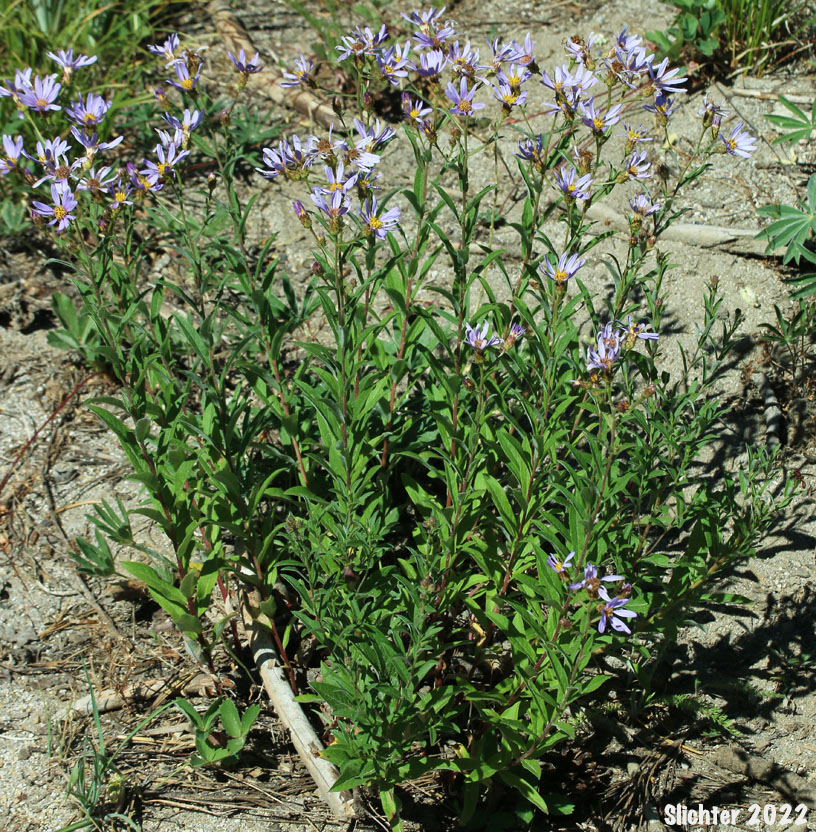
Meadows of mature seed heads of Cascade aster as seen at left amongst burnt snags of the Cascade Complex fire adjacent to Horseshoe Meadows, Mount Adams Wilderness...........October 5, 2014. The photo at right shows Cascade aster in bloom near the summit of Green Mountain, several miles northwest of Mount Adams, Gifford Pinchot National Forest......August 5, 2022.

Cascade aster blooming along the Divide Camp Trail # 112, Mt. Adams Wilderness........August 6, 2017.
 -
- 
Cascade aster in bloom along the Round the Mountain Trail #9 west of the Aiken Lava Flow, Mt. Adams Wilderness........August 13, 2017.
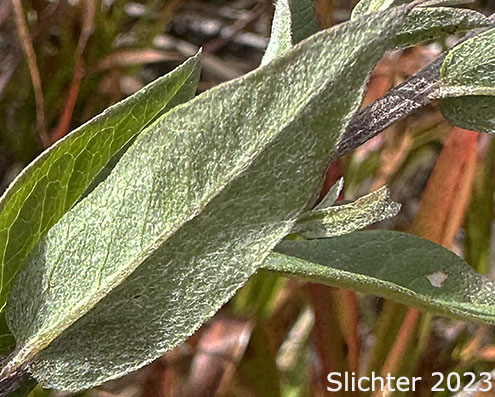 =
= 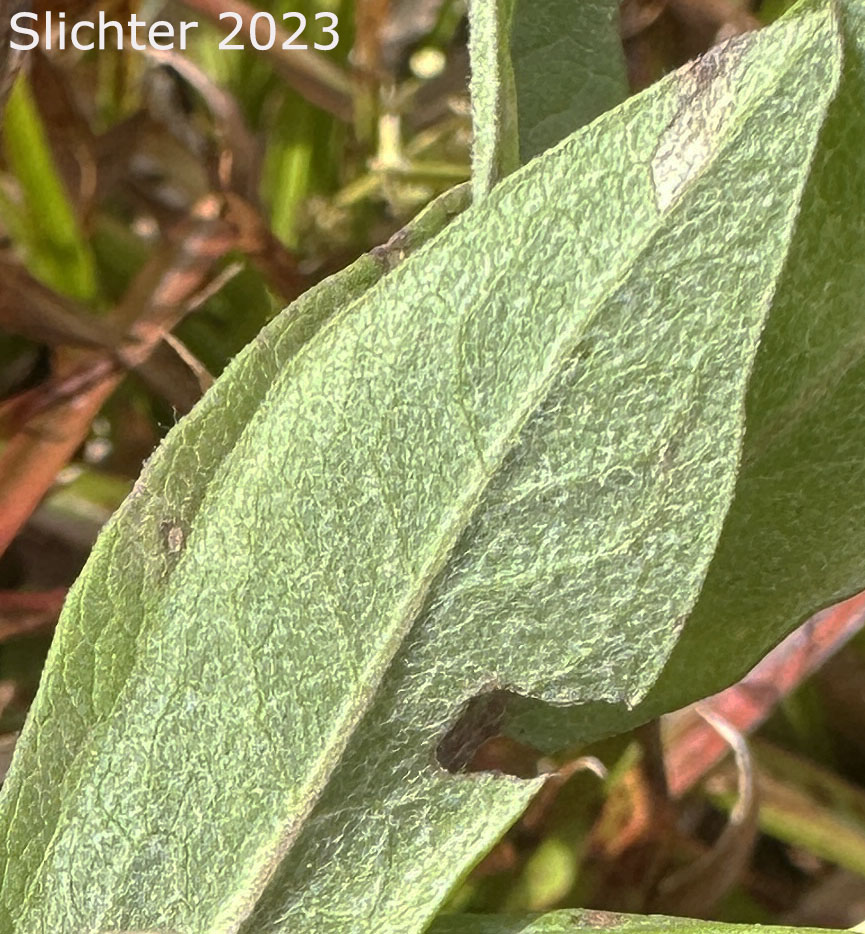
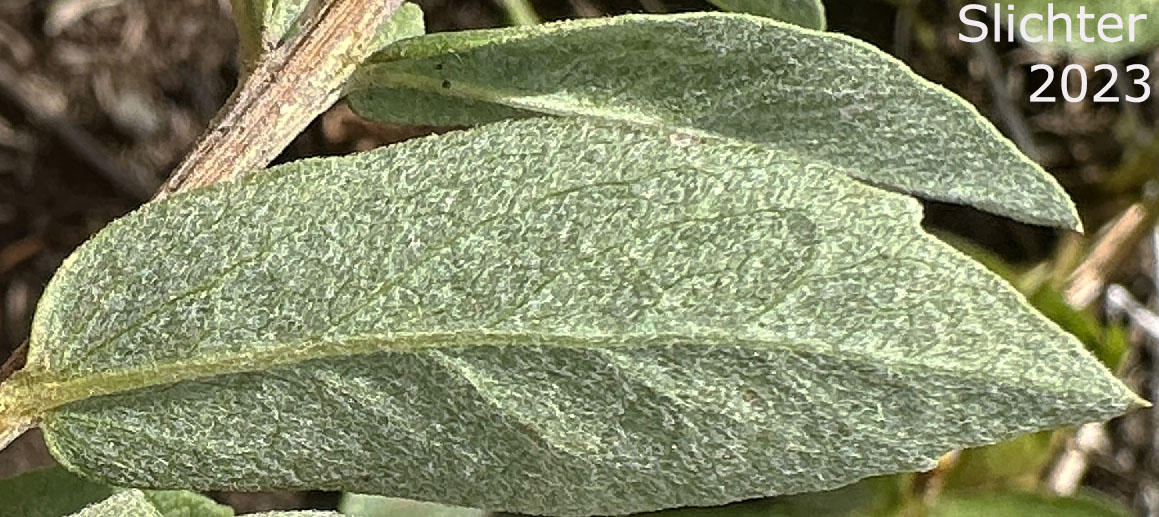
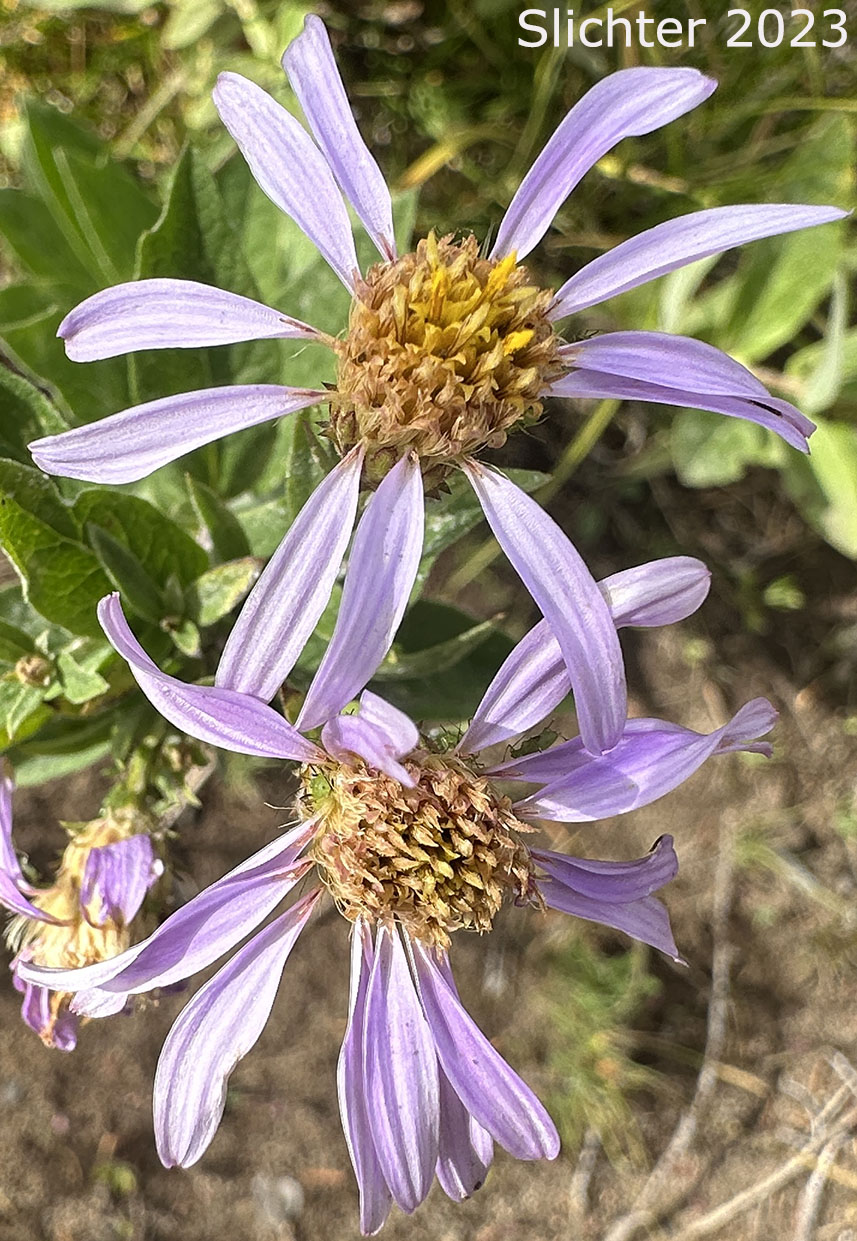 -
- 
Cascade asters booming along the Round the Mountain Trail #9 about one-third of a mile uphill from the Bird Creek Meadows Trailhead, Yakama Nation lands at Bird Creek Meadows.....September 2, 2023. The lower leaf surface has a thin coating of white, woolly hairs.
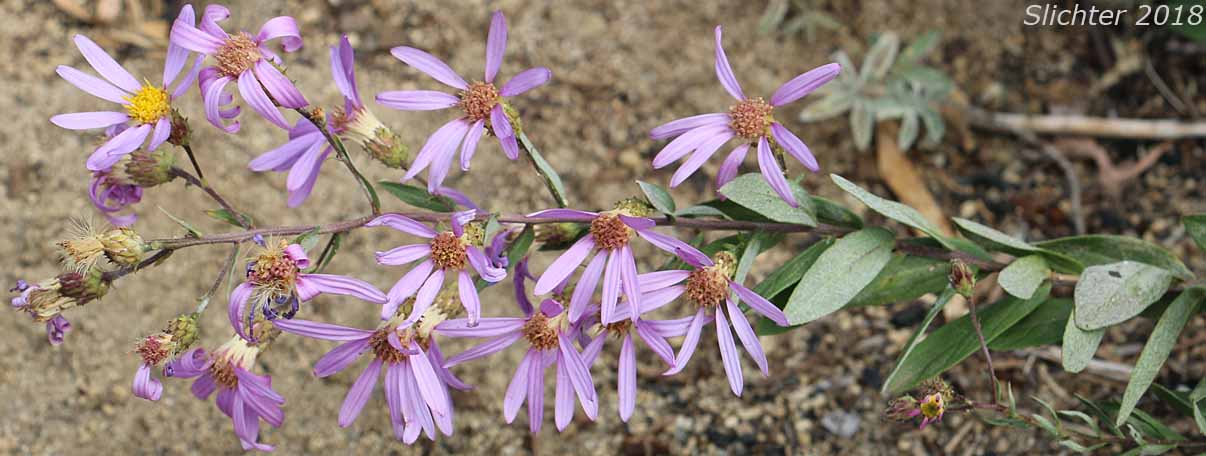
 -
- 
Cascade asters blooming along the South Climb Trail #183, Mt. Adams Wilderness, about half mile uphill from the Cold Springs trailhead.......August 30, 2018.
Flower head of cascade aster, Mt. Adams........September
8, 2001.
Lower stem leaves of cascade aster as seen
on steep south-facing slopes just west of Little Mt. Adams, Mt. Adams........September
8, 2001. Note that at flowering time they are withering.
Paul Slichter
 The photo at
right shows the involucre of cascade aster as seen on steep south-facing
slopes to the west of Little Mt. Adams on the southeastern side of Mt. Adams.........September
8, 2001.
The photo at
right shows the involucre of cascade aster as seen on steep south-facing
slopes to the west of Little Mt. Adams on the southeastern side of Mt. Adams.........September
8, 2001.
